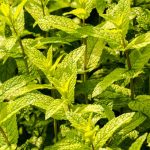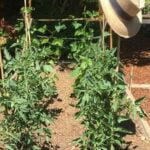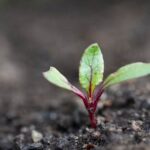Vegetable gardening in Texas offers a unique and rewarding experience, despite the challenges that come with the state’s diverse climate. With the right knowledge and strategies, cultivating your own fresh produce can be a fulfilling endeavor. This article provides a comprehensive guide to vegetable gardening in Texas, covering everything from understanding the climate to choosing the right varieties and maintaining a thriving garden.
Texas is known for its contrasting weather patterns, which can vary greatly depending on the region you’re in. From scorching hot summers to temperamental winters, it may seem daunting to think about growing vegetables in such conditions. However, with careful planning and adaptation, you can overcome these hurdles and enjoy a bountiful harvest.
Whether you are an experienced gardener or just starting out, this article will equip you with valuable information to maximize your success. You’ll learn about the key factors that influence vegetable gardening in Texas, such as soil preparation, planting techniques, watering strategies, pest control methods, and essential maintenance tasks.
By following the guidance provided in this article, you’ll gain insight into how to choose vegetable varieties that thrive in Texas’ unique climate. You’ll also discover tips for preparing nutrient-rich soil beds that support healthy plant growth. With these foundations established, you’ll be well on your way to enjoying the benefits of fresh and sustainable produce from your very own backyard.
Understanding the Texas Climate
The Texas climate plays a crucial role in determining the success of your vegetable garden. Understanding the unique weather patterns and temperature fluctuations can help you make informed decisions when it comes to selecting the right vegetables for your Texas garden. Here are some key factors to consider:
- Heat Tolerance: Texas is known for its hot summers, with temperatures often reaching triple digits. It’s essential to choose vegetables that can tolerate high heat and thrive in these conditions. Some heat-tolerant options include tomatoes, peppers, okra, sweet potatoes, and black-eyed peas.
- Drought Resistance: Texas is prone to periods of drought, so selecting vegetables that can withstand dry conditions is essential. Look for drought-resistant varieties such as zucchini, eggplant, Swiss chard, melons, and pumpkins. These vegetables have deep roots that enable them to access water from lower soil layers.
- Cold Hardiness: While Texas has scorching summers, it can also experience brief periods of freezing temperatures during winter months. Consider cold-hardy vegetables like lettuce, spinach, kale, broccoli, carrots, and radishes that can tolerate mild frosts.
To make the most out of your vegetable garden in Texas’ unique climate:
- Choose plant varieties suitable for high heat and drought resistance.
- Utilize mulch around plants to retain moisture in the soil during dry periods.
- Plant cover crops during fallow periods to protect the soil from erosion.
- Consider providing shade or using shade cloths to moderate extreme summer temperatures.
- Implement proper watering techniques (covered in Section 6) to ensure optimal hydration for your plants.
By understanding the Texas climate and selecting appropriate vegetable varieties accordingly, you’ll set yourself up for a successful gardening experience with thriving plants that can withstand the challenges posed by the Lone Star State’s weather patterns.
Choosing the Right Vegetable Varieties for Texas
Choosing the right vegetable varieties is crucial for successful gardening in Texas. The Lone Star State’s unique climate and growing conditions require specific types of vegetables that can thrive in the heat and often unpredictable weather. Here are some recommendations for vegetable varieties that grow best in Texas:
Tomatoes
Choose varieties such as ‘Celebrity,’ ‘Big Boy,’ or ‘Heatwave II’ as they have good heat tolerance and disease resistance. These tomatoes are well-suited to Texas’ hot and humid summers.
Squash
Varieties like ‘Yellow Crookneck’ or ‘Green Zucchini’ do well in Texas due to their ability to handle high temperatures and resist pests like squash bugs.
Peppers
Look for pepper varieties such as ‘Jalapeno,’ ‘Anaheim,’ or ‘Poblano’ as they thrive in the hot climate of Texas. These peppers are known for their heat tolerance and produce abundant harvests.
Okra
Okra is a popular vegetable in Texas gardens due to its heat-loving nature. Opt for varieties like ‘Clemson Spineless’ or ‘Burgundy’ which are known for their excellent flavor and yield.
Beans
Choose bush-type bean varieties such as ‘Provider’ or ‘Contender’ that can handle Texas’ summer heat better than pole beans. These varieties also boast good disease resistance, making them suitable choices for gardeners in the state.
It’s important to note that these are just a few examples of vegetables that grow well in Texas. It’s also beneficial to consult with local experts, attend gardening workshops, or join online forums dedicated to gardening in your specific region to discover other valuable recommendations for vegetable varieties that excel in Texas’ unique climate.
When selecting vegetable varieties, consider factors such as heat and drought tolerance, disease resistance, and specific planting and harvesting times. By choosing the right vegetable varieties for Texas, you are setting yourself up for a successful and bountiful garden harvest.
Preparing Your Soil
One of the most important aspects of successful vegetable gardening in Texas is preparing your soil. By taking the time to properly prepare and enrich your soil, you can provide a healthy and fertile environment for your vegetables to thrive. Here are some essential steps to ensure nutrient-rich beds for your vegetables.
- Test Your Soil: Before you start preparing your soil, it’s important to know its pH level and nutrient content. You can purchase a soil testing kit from a local garden center or send a sample to a professional laboratory for analysis. This will help you determine if any amendments are needed to improve the quality of your soil.
- Amend Your Soil: Based on the results of your soil test, you may need to add certain amendments to balance the pH level and enrich the nutrient content of your soil. For example, if your soil is acidic, you can add agricultural lime to raise the pH.
If it’s alkaline, sulfur or peat moss can be used to lower the pH. Organic matter such as compost or well-rotted manure can also be added to improve the overall fertility of the soil. - Till or Double Dig: Once you have amended your soil, it’s time to till or double dig the area where you will be planting your vegetables. This process helps break up compacted soil and ensures that the amendments are thoroughly mixed in. Make sure to remove any rocks, weeds, or other debris as you work.
- Mulch Your Beds: After tilling or double digging, it’s beneficial to mulch your vegetable beds with organic materials such as straw, leaves, or wood chips. Mulching helps suppress weed growth, retain moisture in the soil, regulate temperature fluctuations, and add organic matter over time as it breaks down.
By following these essential steps for preparing your soil, you can create nutrient-rich beds that provide an ideal growing environment for your vegetables in Texas. Remember that healthy soil is the foundation for a successful vegetable garden, so it’s worth investing the time and effort to get it right.
Planting Techniques
When it comes to vegetable gardening in Texas, proper planting techniques are essential for a successful harvest. The Lone Star State’s unique climate and soil conditions require specific considerations when sowing your vegetables. In this section, we will explore some tips and tricks to help you maximize your planting efforts and ensure a thriving vegetable garden.
One important factor to consider when planting vegetables in Texas is the timing. Due to the state’s long growing season and hot summers, it is crucial to plant at the right time to avoid heat stress and promote healthy growth. Depending on the specific vegetable, planting dates may vary, but in general, it is recommended to start planting warm-season crops in early spring after the last frost date.
Another important aspect of planting techniques is proper spacing between plants. Crowded plants can lead to poor air circulation and increase the risk of diseases. Different vegetables have different spacing requirements, so it is essential to research each crop before planting. Providing enough space between plants also allows them access to sufficient sunlight, water, and nutrients, promoting their overall health and productivity.
In addition to timing and spacing, it is vital to properly prepare the soil before sowing your vegetables. This includes removing any weeds or grass from the planting area and incorporating organic matter such as compost or well-rotted manure into the soil. By doing so, you improve the soil’s structure and fertility, allowing for better root development and nutrient absorption.
To summarize the key points for successful vegetable sowing in Texas:
- Plant at the appropriate time considering Texas’ long growing season.
- Provide adequate spacing between plants for optimal growth.
- Prepare your soil by removing weeds and incorporating organic matter.
By following these tips, you will set yourself up for success in your Texas vegetable garden. Keep these techniques in mind when planning your next gardening endeavor and enjoy bountiful harvests of homegrown vegetables. Happy planting.
| Key Points | Details |
|---|---|
| Planting Time | Start planting warm-season crops in early spring after the last frost date. |
| Spacing Between Plants | Research each vegetable’s spacing requirements and provide enough space for optimal growth. |
| Soil Preparation | Remove weeds, incorporate organic matter like compost or well-rotted manure to improve soil fertility. |
Watering and Irrigation
Water is a critical component for the success of any vegetable garden, and in the hot and dry climate of Texas, it is even more crucial. Proper watering and irrigation techniques play a significant role in keeping your Texas vegetable garden thriving. In this section, we will explore some smart strategies and tips to help you efficiently water your plants and ensure their health and productivity.
Understanding the Water Needs of Your Vegetable Garden
Different vegetables have varying water requirements. Understanding the specific needs of each crop allows you to tailor your watering schedule accordingly. Leafy greens such as lettuce and spinach generally require more frequent watering as they have shallow roots. On the other hand, root crops like carrots and radishes do well with less frequent but deep watering.
In addition to considering individual plant needs, it is important to factor in weather conditions when determining how much water your vegetable garden needs. During hotter months or periods of drought, you will likely need to increase the frequency and amount of irrigation.
Implementing Efficient Watering Practices
One effective strategy for watering your Texas vegetable garden is to use a soaker hose or drip system. These methods deliver water directly to the base of the plants, minimizing evaporation and reducing weed growth.
Mulching is another technique that can be beneficial for retaining soil moisture. Apply a layer of organic mulch around your plants, such as straw or compost, which helps trap moisture in the soil and prevents it from evaporating quickly.
Consider implementing a rainwater harvesting system to supplement your irrigation needs. Collecting rainwater during wet periods allows you to conserve water resources while providing a natural source for your plants during drier times.
Tips for Watering Success
To optimize watering efficiency, follow these additional tips:
- Water early in the morning when temperatures are cooler to reduce evaporation.
- Direct water at the base of plants rather than spraying foliage.
- Avoid over-watering, as this can lead to root rot and other problems. Monitor your soil moisture by checking for dampness at a depth of a few inches.
- Adjust your watering schedule based on rainfall and weather conditions. Be prepared to increase or decrease irrigation as needed.
By following these smart strategies, employing efficient practices, and staying vigilant in monitoring your plants’ water needs, you can ensure that your Texas vegetable garden receives the necessary moisture for long-term health and vitality.
Pest Control
Identifying Common Texas Insects and Diseases
One of the biggest challenges that vegetable gardeners in Texas face is dealing with common insects and diseases that can wreak havoc on their plants. It is important to be able to identify these pests and diseases in order to implement effective control measures.
Some of the most common insects that can damage vegetable plants in Texas include aphids, caterpillars, squash bugs, and tomato hornworms. Diseases such as powdery mildew, bacterial wilt, and fusarium wilt are also prevalent in the Lone Star State.
Natural Pest Control Methods
When it comes to controlling pests in your Texas vegetable garden, it is always best to start with natural methods before resorting to chemical pesticides. Encouraging beneficial insects such as ladybugs, lacewings, and parasitic wasps can help keep pest populations under control.
These beneficial insects feed on pests like aphids and caterpillars without causing harm to your plants. Additionally, practicing good garden hygiene by removing plant debris and regularly inspecting your plants for signs of infestation can go a long way in preventing pest problems.
If natural methods alone are not sufficient to control pests in your vegetable garden, there are some organic insecticides available that specifically target certain types of pests while minimizing harm to beneficial insects. It is important to read and follow the instructions carefully when using any type of insecticide, organic or not.
Preventing Diseases in Your Vegetable Garden
In addition to insect pests, diseases can also be a major threat to your Texas vegetable garden. To minimize the risk of diseases, it is important to practice good sanitation by removing infected plant material from the garden and disinfecting tools between uses. Crop rotation is another effective strategy for preventing soil-borne diseases as it helps break the life cycle of pathogens.
In some cases, preventative measures may not be enough to stop the spread of diseases. If your plants show signs of disease such as wilting, spotting, or yellowing leaves, it is important to act quickly. Dispose of infected plants and consider using organic fungicides or biopesticides that target specific diseases. These products can help suppress the spread of diseases and protect healthy plants in your vegetable garden.
By implementing these pest control strategies and staying vigilant in monitoring your garden for pests and diseases, you can protect your Texas vegetable garden and increase your chances of a successful harvest.
Maintaining Your Vegetable Garden
Once you have successfully prepared your soil, planted your vegetables, and watched them grow, it’s important to maintain your vegetable garden to ensure healthy and productive plants. Here are some essential tasks to keep in mind:
- Regular Weeding: Weeds can quickly become a nuisance in any garden, competing with your vegetable plants for nutrients and water. Regularly inspect your garden beds and remove any weeds that you find. Pulling them out by hand or using a hoe can help prevent them from spreading. Mulching around your plants can also help suppress weed growth.
- Watering Properly: Adequate watering is crucial for the health of your vegetable plants. In Texas, where hot and dry conditions are common, it’s important to water deeply and less frequently to encourage strong root growth. Avoid overhead watering during the hottest part of the day as it can lead to evaporation. Instead, water in the early morning or evening when temperatures are cooler.
- Fertilizing: To ensure nutrient-rich soil for your vegetables, regular fertilization is essential. Organic fertilizers or compost can be applied every few weeks to provide a steady supply of nutrients throughout the growing season. Follow the instructions on the packaging carefully to avoid overfertilization, which can harm your plants.
- Pest Management: Regular monitoring for pests is crucial in maintaining a healthy vegetable garden in Texas. Inspect leaves, stems, and fruits regularly for signs of insect damage or diseases such as powdery mildew or fungal infections. If an infestation occurs, consider using organic pest control methods such as hand-picking insects or applying natural deterrents like neem oil or soap sprays.
- Pruning and Training: Certain vegetables like tomatoes or cucumbers benefit from pruning and training techniques to maximize productivity and airflow while reducing disease risks. Remove suckers from tomato plants and use stakes or trellises to support vertical growth. For cucumbers, pruning excessive foliage can promote better air circulation and reduce the chance of mildew.
By implementing these essential maintenance tasks, you can ensure that your vegetable garden in Texas remains healthy and productive throughout the growing season. Regular weeding and proper watering, fertilizing, pest control, and pruning will help your plants thrive, resulting in bountiful harvests of fresh and delicious produce.
Harvesting and Enjoying the Fruits (and Vegetables) of Your Labor
After all the hard work you’ve put into your vegetable garden, it’s finally time to enjoy the fruits (and vegetables) of your labor. Harvesting fresh produce from your own garden can be a rewarding experience, but it’s important to know when and how to pick your crops for maximum flavor and nutrition. In this section, we will provide you with some tips for harvesting and using your fresh Texas produce.
When it comes to harvesting vegetables in Texas, timing is key. Different vegetables have different indicators that they are ready to be picked. For example, tomatoes should have a deep red color and yield slightly when gently squeezed. Okra pods should be tender and about 2-3 inches long. Leafy greens like lettuce and spinach can be harvested when the leaves are young and tender.
It’s important not to leave harvested vegetables sitting in the sun for too long, as they can quickly lose their flavor and nutrients. Once harvested, store your vegetables in a cool place or bring them indoors right away. If you’re planning on storing them for a longer period, consider options like canning or freezing to preserve their freshness.
Now that you have a bountiful harvest from your vegetable garden in Texas, it’s time to savor the flavors. There are endless possibilities for using fresh produce in delicious recipes. Consider making a hearty salad with freshly picked lettuce, cucumbers, and tomatoes. Roast or grill some colorful bell peppers and zucchini as a tasty side dish. Add some freshly harvested herbs like basil or parsley to elevate the flavors of any dish.
Conclusion
In conclusion, vegetable gardening in Texas is not only worth the effort, but it also brings immense joy and rewards. By understanding the unique Texas climate and choosing the right vegetable varieties, you can create a thriving garden that produces bountiful harvests. Preparing your soil with essential nutrients and employing smart planting techniques will ensure healthy plants and high yields.
Watering and irrigation are crucial aspects of successful vegetable gardening in Texas. By implementing smart strategies to keep your garden adequately hydrated, you will support plant growth and maintain their overall health. Additionally, taking proactive measures for pest control will protect your vegetable garden from common Texas insects and diseases.
Maintaining your vegetable garden requires regular attention and care. By staying on top of essential tasks such as weeding, pruning, and fertilizing, you will keep your plants healthy and productive throughout the growing season. Finally, once the time comes for harvesting, make sure to pick your fresh Texas produce at its peak ripeness for maximum flavor and nutritional value.
Overall, embracing the joy and rewards of vegetable gardening in Texas will not only provide you with fresh, delicious produce but also a sense of accomplishment. Whether you are an experienced gardener or just starting out, following these guidelines will set you up for success in creating a thriving vegetable garden in the Lone Star State. So roll up your sleeves, get your hands dirty, and enjoy all that vegetable gardening has to offer in Texas.
Frequently Asked Questions
When should I start a vegetable garden in Texas?
The best time to start a vegetable garden in Texas typically depends on the region you are in and the specific vegetables you want to grow. In general, for most parts of Texas, it is advisable to start planting in early spring around February or March when the soil begins to warm up and the threat of frost has passed. This allows your vegetable plants to establish themselves before the intense heat of summer arrives.
However, some vegetables like tomatoes and peppers can be planted earlier, as they are more tolerant of cooler temperatures. It’s always a good idea to consult a local gardening guide or talk to experienced gardeners in your area for specific recommendations.
What vegetables are good to grow in Texas?
Texas offers an ideal climate for growing a wide variety of vegetables. Some popular vegetables that do well in Texas include tomatoes, peppers, squash, beans, okra, cucumbers, onions, sweet potatoes, and various herbs such as cilantro and basil. These vegetables thrive in the warm temperatures and abundant sunlight found throughout most regions of the state.
Additionally, native Texan vegetables like jalapeños and black-eyed peas are also excellent choices for a Texas garden. When choosing what vegetables to grow in Texas, consider both your personal preferences and the specific requirements of each plant.
What’s the easiest vegetable to grow in Texas?
While there are several easy-to-grow vegetables in Texas, one vegetable that stands out is okra. Okra thrives in hot climates with long periods of sunshine, which makes it an ideal choice for many parts of Texas. It is known for its ability to tolerate drought conditions and does not require excessive watering once established.
Okra plants also have few issues with pests or diseases commonly found in other types of vegetables grown in the region. Furthermore, okra is a prolific producer and can yield an abundant harvest throughout the growing season if provided with proper care and maintenance. Whether you enjoy frying it up or adding it into stews and gumbo dishes, growing okra can be a rewarding and relatively hassle-free experience for Texas gardeners.

If you’re looking to get into vegetable gardening, or are just looking for some tips on how to make your current garden better, then you’ve come to the right place! My name is Ethel and I have been gardening for years. In this blog, I’m going to share with you some of my best tips on how to create a successful vegetable garden.





